Winter always seems like a recreation of hen to see how prolonged you probably can closing sooner than switching the heating on full-time. If this sounds akin to you, then you definately undoubtedly’ll likely already appeared into strategies to reinforce the insulation in your home. Nonetheless in your bid to avoid wasting numerous on energy funds, it’s worth noting that there are some areas of a home you shouldn’t insulate.
If insulation is put in incorrectly or throughout the fallacious areas it would really do further damage than good. Whereas there are a choice of areas that it is advisable to really take into consideration almost about how one can insulate your home, there are only a few that it is advisable to in no way insulate.
1. Near or spherical heaters, boilers and radiators
As you might anticipate, you’ll want to avoid inserting insulation too close to among the finest electrical heaters or boilers, as this might set off plenty of factors. ‘Insulating too shut to these fashions risks them overheating, resulting in gear failure, system inefficiency, and even hearth threats. These areas require sufficient air movement to accurately disperse heat,’ says Mike Storey, insulation skilled at UK Flat Roofing & Insulation Specialists.
It’s moreover essential that you just preserve space spherical boiler flues clear, blocking these can intrude with air movement and create safety risks. Insulating spherical radiators and totally different heating methods might ‘reduce their effectivity in heating rooms because of they need good airflow to movement into warmth efficiently,’ says Gary Jarman, developing skilled at Establishing Retailer.
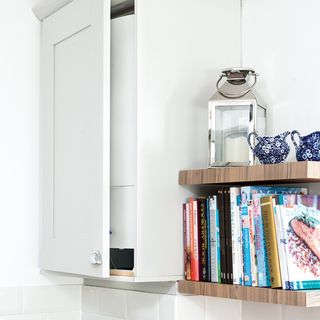
(Image credit score rating: Future/Colin Poole)
2. Spherical vents
Vents can often make our properties actually really feel that bit colder, considerably all through autumn and winter when the temperatures start to dip. Nonetheless ‘although they’ll actually really feel draughty, it is advisable to in no way let insulation cowl over a vent or use draught-proofing provides to dam them up,’ MyJobQuote.co.uk’s property and growth skilled, Thomas Goodman, reveals.
‘This consists of vents on chimney breasts, throughout the roof and air bricks beneath suspended flooring. Blocking them up prevents the movement of air, inflicting moisture to develop to be trapped,’ he continues. And this might end in vital damp factors in the long term.
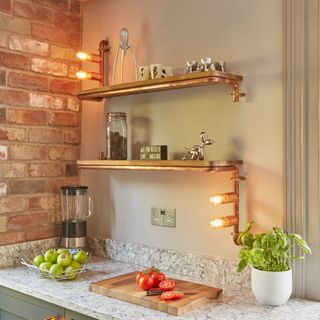
(Image credit score rating: Future PLC/Davit Parmiter)
3. Over electrical cables and wiring
‘Loft insulation over wiring is one different tough one,’ says Mark Glenney, founding father of The Stairlift Retailer. ‘Normally, it’s protected to cowl electrical cables calmly, nevertheless don’t pack insulation too tightly spherical them,’ he continues. It’s as a result of wiring desires space to launch any heat and packing insulation tightly spherical or over cables or wiring can enhance the hazard of overheating. So, you’ll want to check ‘the insulation type and guarantee it complies with UK necessities—there are pointers about protected distances between the insulation and electrical elements for a motive.’ And pretty just some specialists agree with this sentiment.
‘Overlaying wiring with loft insulation is generally great, nevertheless chances are you’ll want to make sure your wiring is rated appropriately and any junction containers are accurately insulated so they don’t overheat and set off a fireplace menace,’ Becky Lane, co-founder and CEO of Furbnow, concurs. ‘For many who’re in any doubt, getting your wiring checked or upgraded sooner than laying that insulation is always a wise switch.’
Not solely can it set off wires and cables to overheat nonetheless it ‘can reduce the cable’s current carrying functionality,’ affirms Paul Spence, Technical Supervisor at Heatly. Primarily, ‘cables should solely be coated with insulation if {{an electrical}} skilled has confirmed this gained’t reduce functionality too significantly,’ he maintains.

(Image credit score rating: Future PLC)
4. Cavity partitions in older properties
Although most cavity partitions will probably be insulated – and that’s most certainly one of many essential frequent areas for insulation to be added – there are only a few instances the place it’s greater to not, the specialists agree. As an example, have you learnt that older properties and properties had been constructed with sturdy partitions that ought to breathe? And since these partitions depend upon airflow via them to deal with moisture, ‘improper cavity wall insulation can lead to condensation factors,’ informs David Miloshev, electrician and residential enchancment skilled at Unbelievable Suppliers.
For many who do plan on insulating the cavity partitions of an older property, chances are high you may wish to make use of breathable insulation provides to retain this implies.
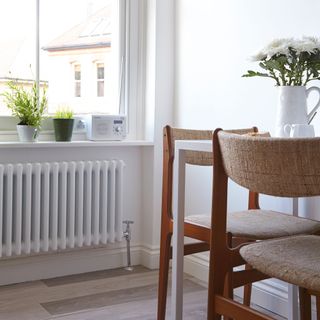
(Image credit score rating: Future PLC)
5. Beneath floor boards in older properties
As soon as extra, this moreover primarily pertains to older properties and Luis Montes, structural engineer, heavy-duty gear skilled and Chief Editor at Fortis HD, proposes that ‘older properties’ underfloor voids should not be insulated.’ It’s as a result of ‘some older UK properties have suspended timber flooring with air bricks throughout the bottom.’ And these air bricks help to ventilate the world and cease any moisture from construct up. Nonetheless as shortly as you insulate or block this house, it would set off moisture to be trapped beneath the bottom, leading to picket rot and even structural factors in a worse case state of affairs.
‘This error has worth people pricey repairs,’ Luis reveals.
6. Attic or roof eaves
Blocking these might set off condensation, moisture and even mould to assemble up ‘and it’s important to keep up them free so that the lifespan of the roof just isn’t compromised,’ Gary warns. The very last item you want is to must change your roof because you wrongly insulated your eaves.
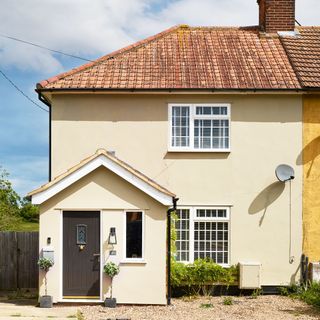
(Image credit score rating: Future PLC/Darren Chung)
7. Any damp areas of your home
There’s nothing further irritating than discovering damp or further moisture and condensation in your home. Nonetheless if you’re enthusiastic about insulating an house that is already vulnerable to damp, this isn’t suggestion.
‘For many who don’t take care of the moisture first, the insulation will lure it and end in mould, mildew or rot. And this will compromise the insulation over time and reduce its effectiveness, most likely even weakening surrounding constructions,’ Mike says.
So, it’s important to restore any damp factors sooner than even enthusiastic about insulating these areas of your home, as not solely may it make the problem worse nevertheless chances are you’ll primarily be shedding your time and money by placing in any sort of insulation sooner than it has been remedied. It could be that you have a leak or one factor as simple as an extreme quantity of condensation – understand why it is occurring sooner than you consider insulating this part of your home.
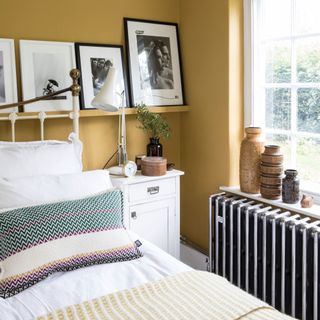
(Image credit score rating: Future/James French)
FAQs
Can an extreme quantity of insulation set off damp?
‘It’s not that you may have an extreme quantity of insulation, nevertheless that you may have too little air movement,’ Thomas explains. Primarily, ‘the fallacious sort of insulation might set off damp. For instance, using non-permeable insulation beneath a picket floor will block airflow, leading to a build-up of moisture which will most likely rot joists and floorboards. Equally, older properties are constructed with sturdy partitions that are designed to breathe. So, chances are high you may wish to make use of breathable insulation provides to retain this implies,’ Thomas gives.
It’s moreover important that your partitions are in good state of affairs sooner than you start insulating them, in some other case chances are high you may exacerbate damp factors. For instance, if you apply mineral wool insulation to the inside of your partitions sooner than fixing present damp factors, it’s extra more likely to sag and lose its insulating properties, plus it will possibly start to go mouldy and make your partitions moist.
What areas of your home need insulation?
Whereas we’ve outlined a number of of the areas that shouldn’t be insulated, there are some which can make an enormous distinction in a optimistic method. The plain house is your roof or attic and it is as a result of spherical 25% of the home’s heat is misplaced via the roof, consistent with the specialists. ‘It’s moreover considered one of many greatest and least costly areas in order so as to add insulation,’ Thomas argues. ‘Blanket insulation costs about £25 and will probably be DIY-fitted if you’re on an honest funds. Or, in case you have got a vaulted roof, it is advisable to add insulation between the rafters instead.’ Merely envisage to go away some space for air movement.
And given the reality that this might forestall numerous of kilos in your energy funds, it’s one factor to noticeably take into consideration. One different house that you just might want to pay attention to is your pipes and scorching water tanks. By insulating them you are serving to all of the heating system to retain its heat, which helps them to work further successfully and cease any heat loss, which could forestall money in your funds.
So, there are pretty just some points that it is advisable to take into consideration sooner than you start insulating your home, whether or not or not that’s via a spot of DIY or when consulting an skilled.
